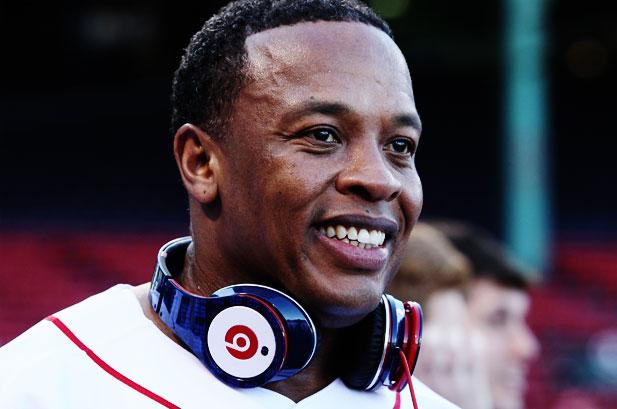
Dr. Dre was far too cool to attend WWDC, the San Francisco developers’ conference where Apple announced its incorporation of Beats Music service into its new Apple Music app on Monday. But Beats most likely wouldn’t exist without him.
Dre is best known as a superstar producer for Eminem, Mary J. Blige and numerous others, and a solo rapper who sold millions of copies of his landmark 1992 album The Chronic. But he is also one of the richest and most savvy businesspeople in the music industry.
We chart Andre Young’s chronology from South Central Los Angeles house-party genius to the “first billionaire in hip-hop.” (Although, according to Forbes, Diddy is richer.)
YouTube/”emimusic”Dr. Dre in the video for NWA’s “Express Yourself” in 1988.
1986: Dr. Dre joins N.W.A and records several important albums, notably Straight Outta Compton, for bandmate Eazy-E’s label Ruthless Records. As the upcoming biopic Straight Outta Compton will undoubtedly show, N.W.A began as the Beatles of West Coast hip-hop before infighting led stars such as Ice Cube and Dre to take off.
1991: To escape N.W.A and his contract with Ruthless, Dre’s business partner Marion “Suge” Knight shows up at the Ruthless offices with goons, baseball bats and pipes, or so Eazy would allege in a lawsuit. Freed from the band that made him famous, Dre teams with Knight to create Death Row Records, for which Knight reportedly borrowed $1.5 million from a drug kingpin and his wife. Death Row puts out Dre’s The Chronic, Snoop Dogg’s Doggystyle and 2Pac’s All Eyez On Me.
1996: Dre leaves Death Row for unexplained reasons — some say he was upset about the death of Tupac Shakur, who was murdered in a car Knight was driving on a Las Vegas street. But in an interview with 2Pac Forum Channel two years ago, Rick Clifford, the label’s former chief engineer, says Dre left because Knight signed new artists without consulting him. “Suge’s supposed to take care of the business and I’m supposed to be taking care of the creative and nobody’s supposed to sign to this company unless I hear them first,” Clifford said Dre told him. “About a week later,” he added, “he was gone.”
Mike Coppola/Getty ImagesDr. Dre and Jimmy Iovine formed Interscope records in 1998.
1998: Dre forms his own label, Aftermath, and partners with veteran rock engineer Jimmy Iovine’s new Interscope Records. Aftermath started slowly — Dawn Robinson of En Vogue split because she felt Aftermath was taking too long to break her solo release, and hip-hop supergroup the Firm broke up shortly after putting out its debut. But one night in Iovine’s basement, Dre listened to a cassette called The Slim Shady EP and Aftermath signed a new Detroit rapper: Eminem. 50 Cent, G-Unit, the Game and other hip-hop superstars followed. Universal Music, which wound up owning Interscope through a series of music-business mergers, became the world’s biggest record label because it was, as some would say, “The House That Dre Built.”
2001: After selling 30 percent of his Aftermath stake to Interscope for a reported $35 million, Dre lands at Number Two on Rolling Stone‘s list of highest-earning artists, in part because he was still getting lucrative production gigs (like $2 million for Mary J. Blige’s Family Affair). He placed behind U2 ($62 million) and ahead of the Beatles ($48 million).
Getty Images/ElsaDre and Iovine started Beats Electronics in 2006.
2006: After Iovine decides Apple’s earbuds are flimsy and sound terrible, he forms a new headphones company with Dre as his partner and figurehead (and Monster, the audio-cable giant, as the distributor, manufacturer, and inventor, or so the company would allege in a lawsuit). “Dre and I decided to market this product just like it was 2Pac or U2 or Guns N’ Roses,” Iovine says at the time. At first, nobody could understand why music fans would buy $200 headphones when earbuds cost a few bucks. By 2013, business experts were projecting Beats to make $1.4 billion in revenue.
2014: Early in the year, Beats launches a streaming-music service to capitalize on a booming new industry and compete with top players Spotify and YouTube. Although Beats Music started slowly, gathering subscriber numbers in the low six figures, the service made enough of a splash to impress Apple. In May, the House of iPhone bought Beats for $3 billion.
